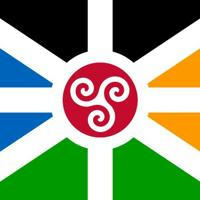
United Celts
Channel for all things Celtic. The Celtic nations are Mannin/Ellan Vannin, Alba, Éire, Cymru, Breizh, and Kernow/Isle of Man, Scotland, Ireland, Wales, Brittany, and Cornwall.
Show more- Subscribers
- Post coverage
- ER - engagement ratio
Data loading in progress...
Data loading in progress...
This traditional Scots Gaelic waulking song is in praise of Alasdair MacDonald, who was the Marquis of Montrose's second-in-command during the War of the Three Kingdoms in Scotland, 1644-45. He was a man of tremendous courage and endurance, and together with Montrose won a series of spectacular victories over the Covenanters and Parliamentarians. He was eventually killed at the battle of Cnoc na nDos near Cork in Ireland in 1647. Very detailed notes of this song can be found in Campbell and Collinson's Hebridean Folksongs volume 2. As in many similar songs, the last part of one verse forms the first of the next. Performed by Capercaillie, 1988 (The Blood Is Strong).
Today's the feast of St Marianus Scotus, an 11thC monk who founded the Scots Monastery at Ratisbon in Germany One of his manuscripts was kept at Fort Augustus Abbey and is now in the care of @natlibscot. It contains the earliest writing in Gaelic in any document now in Scotland
Your current plan allows analytics for only 5 channels. To get more, please choose a different plan.
